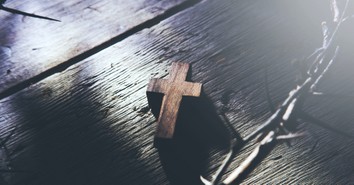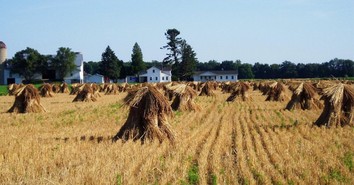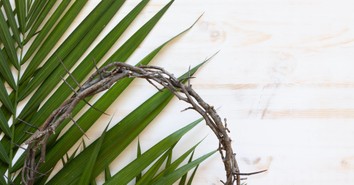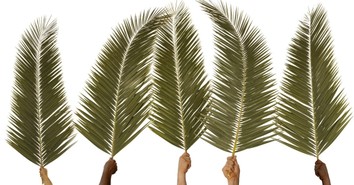Hanukkah: Bringing More Light into the World

The Story of Hanukkah
by Miriam Feinberg Vamosh
Jewish children consider themselves the luckiest kids on the block around winter holiday season...they get presents for eight nights in a row! But just as Christian children are taught that Christmas is more than gift-giving so, too, Jewish parents teach that Hanukkah gifts are a reminder of the origins of the season’s joy, and not the reason for it.
Hanukkah means “dedication” the name by which the holiday is called in John 10:22 and the story is told in the Book of Maccabees. It refers to the renewal of God’s worship in the Temple in Jerusalem after it had been desecrated by the Seleucid Greek conquerors of the Holy Land in 169 BC. The Greeks worshipped Zeus in the Temple, and prohibited Jews on pain of death from following their age-old practices. But in 167 BC, a priestly family called the Hasmoneans from the Judean-mountain town of Modi’in rallied the Jews against their oppressors. About two years later, a rag-tag guerilla army led by the Hasmonean Judah the Maccabee and his brothers overcame the vast and well-equipped Seleucid forces.
Jewish families celebrate for eight days to commemorate the Hanukkah miracle: after the Jews had purified the Temple in the winter of 164 BC, they could find only a small jar of oil, essential in divine service since the time of the Tabernacle (Exodus 25:6). But don’t look for the story in the Book of Maccabees; it is first told in the ancient Jewish commentary on the Bible, the Talmud (Megillat Ta’anit 9).
The Hanukkah candelabrum, or menorah, has nine branches, one to hold a candle or oil for each of the eight nights, and one to light the others, known as the shamash (servant). We light one candle a night until all eight burn brightly, symbolizing our efforts to continually bring more light (holiness) into the world. We place the menorah in the window of the home to remind one and all of God’s never-failing protection.
The blessings the family or community says together when lighting the candles acknowledges God as the ruler of the universe, “who made miracles possible for our ancestors in those days at this same season.” Jewish observers then sing the hymn “Rock of Ages” including the words “My God, you are the rock of my rescue and it is lovely to praise you. Restore my house of prayer where I will offer thanks...”
In remembering ancient heroes, we also tell our children about modern-day heroes, like Golda Meir, Soviet Prisoner of Zion Anatoly Sharansky, the Righteous Gentiles who risked their lives for Jews during the Holocaust and many others.
Then, it’s time for supper, with popular Hanukkah foods including anything fried in oil, especially potato fritters. Like other Jewish holidays, children’s activities are teaching tools. Spinning a top (dreidl) is a favorite. Each side is marked with a Hebrew letter standing for the words “a great miracle happened there” (or “here” if you’re playing in Israel) and trying to guess which letter will come up.
In Israel, part of the Hanukkah celebrations involve visits to the “Land of the Maccabees” in the foothills of Judah around the modern city of Modi’in, near the ancestral home of Judah’s family.
Jesus and Hanukkah
by Eva Marie Everson
I will never forget the first time I read John 10:22 with an inkling of understanding. I was sitting in the sanctuary of the church, reading a nearby passage with the congregation and our pastor, when my eyes diverted to the lines placed halfway down the left-hand side of the page.
Then came the Feast of Dedication at Jerusalem.
It was winter, and Jesus was in the temple area walking in Solomon's Colonnade.
I remember clearly wondering what the “Feast of Dedication” was, exactly. I looked in the “cheat notes” at the bottom of the page and saw these words: That is, Hanukkah.
I was struck with a sudden revelation: Jesus was a Jewish man and as a Jewish man, he celebrated the Jewish feasts and festivals. It was important to him, so much so that he took himself to near the very place where the Hanukkah miracle had occurred.
Solomon’s Colonnade was an open, roofed 45-foot walkway with double columns that were 38 feet tall. It was situated along the east side of the Court of Gentiles (Westerholm 1988:772). Although it was part of the temple complex, it was not considered to be part of the actual temple (Brown 1966:402), as evidenced by the fact that Gentiles were not allowed into the temple but they could be present in Solomon's Colonnade.[1] This “portico” was a type of gateway or entrance to the inner court.[2]
In Jesus' time there was an extra illumination of the Temple during the celebration of Hanukkah, the annual commemoration of the Dedication of the Altar' and of the Sanctuary’; in 165 B.C. (some scholars give 164 B.C.). (I Maccabees 4:36-59; Alfred Edersheim. The Temple. Its Ministry and Services at the Time of Christ, p. 334)
The Levitical musicians provided instrumental background to the Levitical choirs who chanted the Hallel - Psalms 113 to Psalms 118. Some scholars say that Psalms 30 was included since it was A Song of the Dedication of the Temple.
The worshippers responded to the choirs, and waved palm branches, as they had celebrated The Feast of Tabernacles' two months earlier. (II Maccabees 10:6-8) [3]
What Does This Mean for Christians Today?
It is not uncommon to find Christians—whether Messianic Jew or Gentile Christian—celebrating Hanukkah. For Gentile Christians, it serves as a reminder that our God is a god of miracles—past, present, and future.
It is also a reminder of Jesus’ words recorded in John 8: 12: When Jesus spoke again to the people, he said, "I am the light of the world. Whoever follows me will never walk in darkness, but will have the light of life."
Psalm 119:105 states: Your word is a lamp to my feet and a light for my path.
In the opening of his gospel, John wrote: In the beginning was the Word, and the Word was with God, and the Word was God. He was with God in the beginning. Through him all things were made; without him nothing was made that has been made. In him was life, and that life was the light of men. The light shines in the darkness, but the darkness has not understood it.
Within these three sections of Scripture, we find a common theme: Light, Life, and the Word.
When Jesus was in the Temple—and how beautiful it must have been for the feast—he was questioned as to whether he was, in fact, the Messiah. What followed was Jesus’ most vehement answer to this most common question asked of him. Within the text found in John 10:25-38 is another common theme: miracles. He had performed many miracles and those miracles had drawn them to him like bees to honey.
As Hanukkah Draws Near
This year, as Hanukkah draws near, and whether you celebrate with those of the Jewish faith or just spy Hanukkah tableware, menorahs and slender menorah candles in blue and white, toy dreidls, or any number of Hanukkah merchandise nestled on the shelves near the Christmas items, I encourage you to remember the miracles God has performed in your life and the lives of those you love. If you are in need of a miracle, remember this: God, who performed the miracle of Hanukkah for the Jews in 164 BC and Jesus, who performed miracles in Israel 2000 years ago, is the same One who performs miracles today.
So, light a candle… and believe.
[1] http://www.biblegateway.com/resources/commentaries/?action=getCommentaryText&cid=4&source=1&seq=i.50.10.2
[3] http://christianactionforisrael.org/judeochr/hannxmas/lights.html
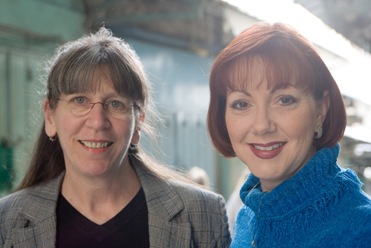
Originally published November 26, 2007.
